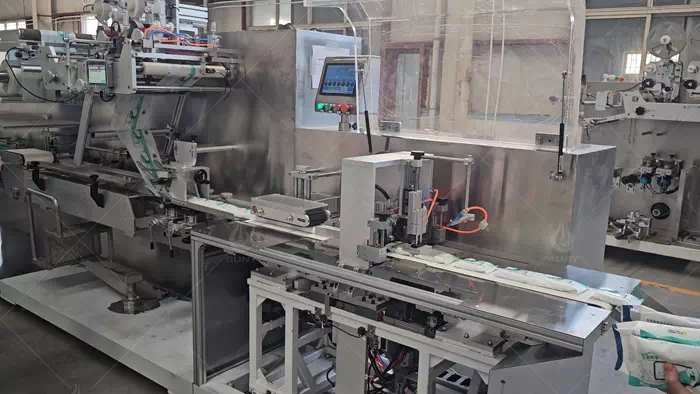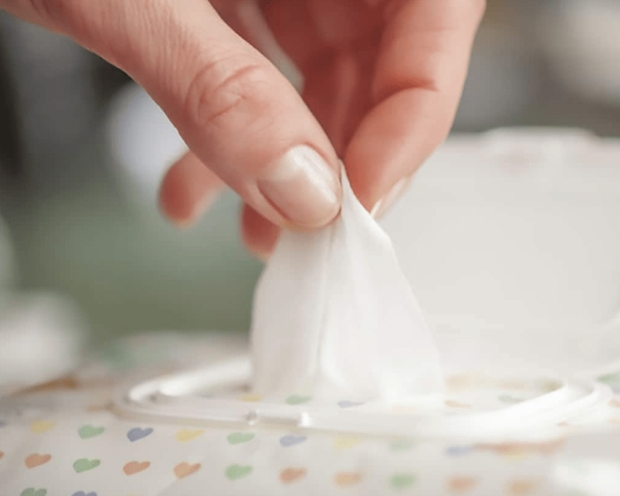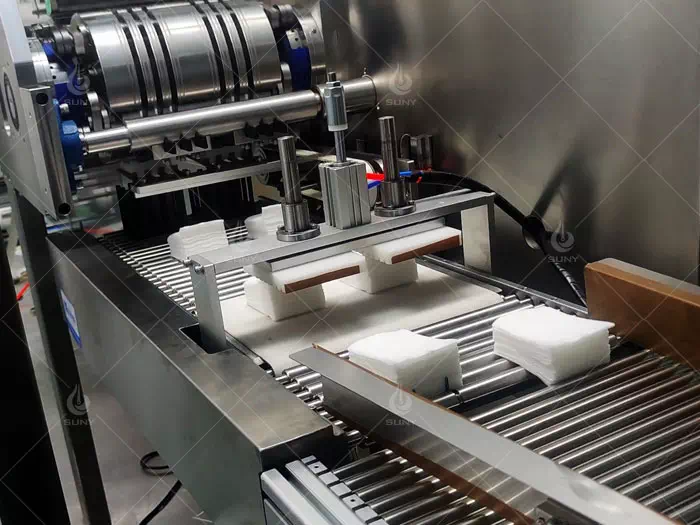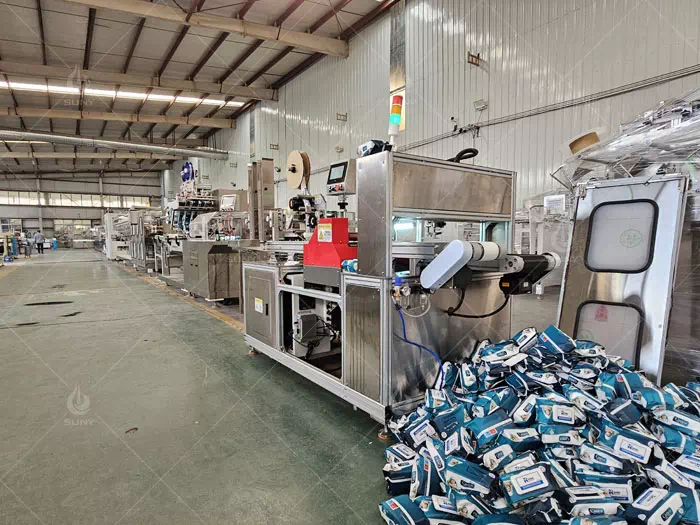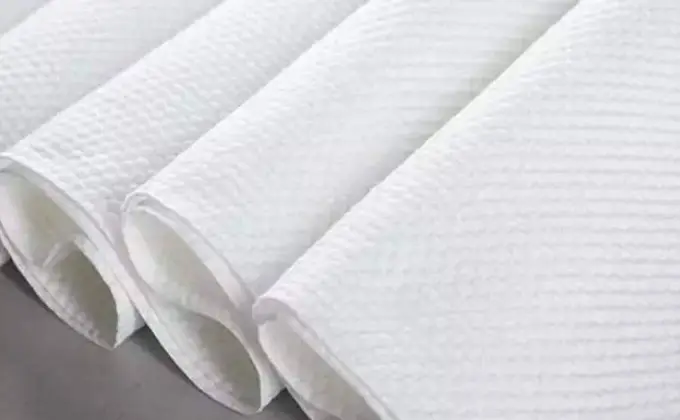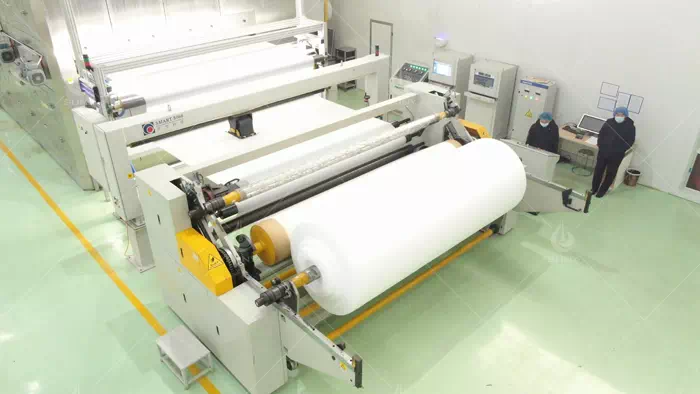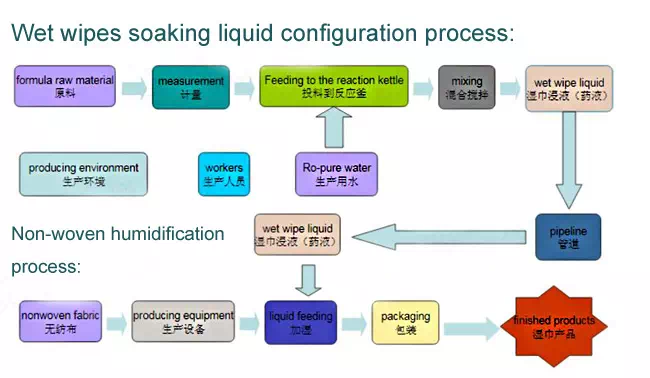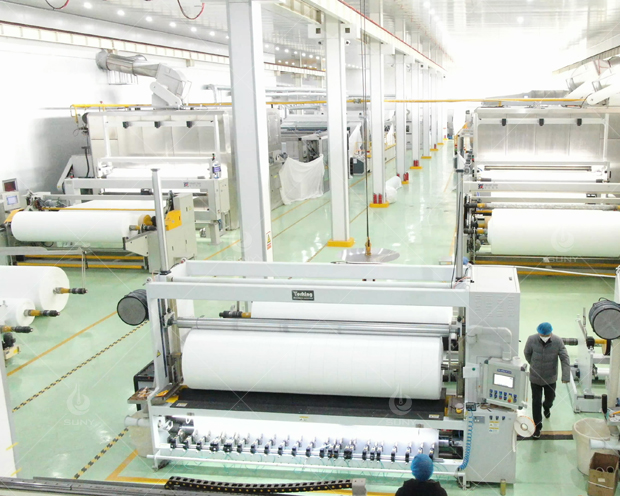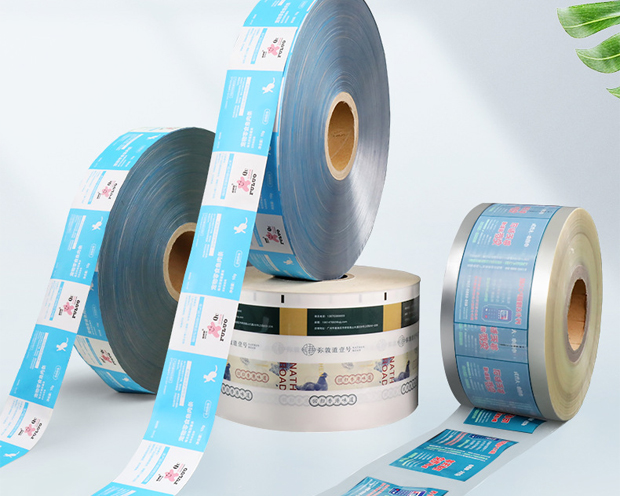Wet wipes are typically made of a combination of materials and ingredients, depending on their intended use and brand. Here are some common materials and ingredients found in wet wipes:
Fabric: The fabric used in wet wipes is usually non-woven material, such as polyester, polypropylene, or a blend of wood pulp and synthetic fibers. These materials are soft, absorbent, and durable.
Water: Water is the primary ingredient in wet wipes, serving as the main solvent for other ingredients and helping to moisten the wipes for effective cleaning.
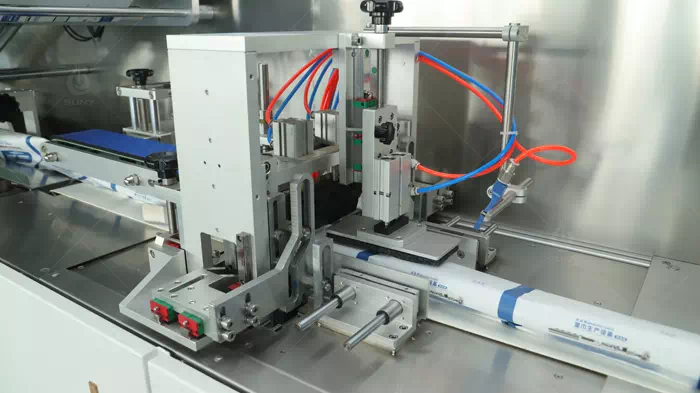
Preservatives: Preservatives are added to wet wipes to prevent the growth of bacteria, mold, and other microorganisms. Common preservatives include phenoxyethanol, parabens, and benzalkonium chloride.
Surfactants: Surfactants are chemicals that help to break down and remove dirt, oil, and other substances from the skin. They also help the solution spread evenly on the wipes. Common surfactants include sodium lauryl sulfate and cocamidopropyl betaine.
Emollients: Emollients are added to wet wipes to help moisturize and soften the skin, preventing it from drying out. Ingredients like glycerin, aloe vera, and vitamin E are commonly used as emollients.
Fragrance: Fragrances are added to give wet wipes a pleasant scent. However, some people may be sensitive to fragrances, so unscented options are also available.
Alcohol: Some wet wipes contain alcohol, such as isopropyl alcohol or ethanol, which helps to kill bacteria and provide additional cleansing properties. However, alcohol can also cause skin dryness and irritation in some individuals.
Preservatives: To extend the shelf life of wet wipes, various preservatives are added to prevent the growth of bacteria, fungi, and other harmful microorganisms.
It’s important to note that the specific ingredients and materials used in wet wipes can vary between brands and formulations. If you have specific concerns about the ingredients in wet wipes, you may want to check the product label or contact the manufacturer for more information.
